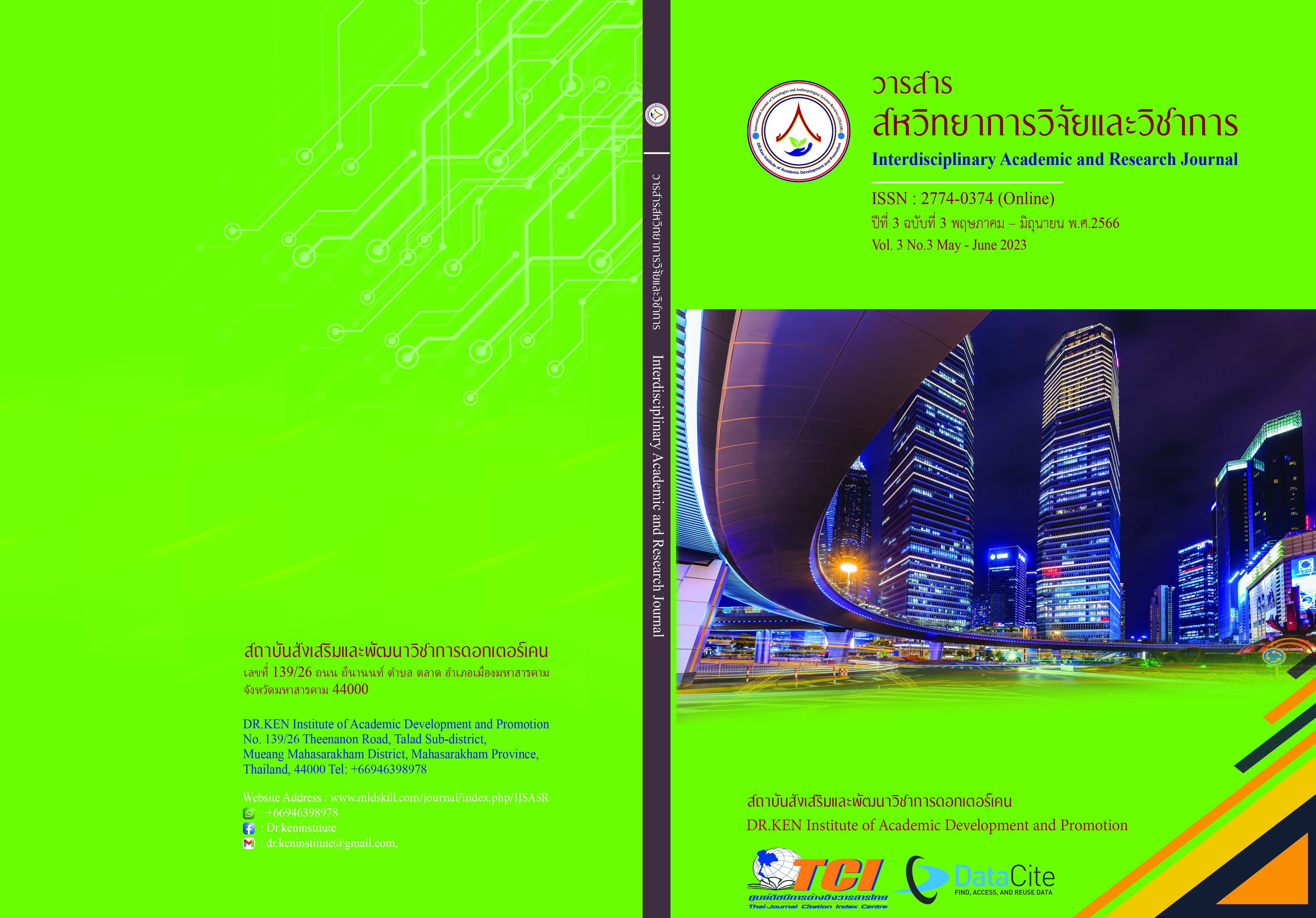The Result of Eye-hand Relationship Training with Eye-hand Coordination Trainer and Ball Reaction on Time in Handball Athletes
DOI:
https://doi.org/10.14456/iarj.2023.171Keywords:
Eye-hand Relationship Training Effect;, Eye-hand ReflexesAbstract
Nowadays, sports training is achieved to achieve the desired objectives trainers and athletes need to research and study training methods or related factors to be used in training to increase the efficiency and abilities of athletes for them to succeed in the competition by adopting ready-made eye-hand training and testing tools, nowadays it can be used in training and testing on handball athletes. The objective of this research was to investigate the effects of training to determine differences between groups and determine the differences within the group with the machine EYE - HAND COORDINATION TRAINER With the ball Reaction That affects reaction time in handball athletes by studying according to the principles of training to develop reaction time between eye and hand approved by the advisory Committee And the experts who are sports trainers in the quality inspection already consist of handball training program relationship training program between eye and hand by machine EYE – HAND COORDINATION TRAINER Relationship Training Program Between Eye and Hand by Ball Reaction and reaction time tests. The response between eye and hand demographic groups used in this research Be a handball athletes National Sports University Chiang Mai Campus Academic Year 2022 18 males and 13 females aged between 18 - 25 years old analysis of test data reaction time difference between eye and hand of both groups before the experiment by analyzing one-way variance the results of the study are summarized as follows: (1) Effect of response difference mean of time reaction between the eye and the hand of the experimental group 1 and group 2 before the experiment was not different at the significance level of 0.05. (2) Difference mean time eye-hand reaction of the experimental group 1 (trained with the EYE-HAND COORDINATION TRAINER) between pre-experimental and post-experimental weeks 4 difference equals 0.121 seconds, between pre-experimental and post-experimental weeks 6 difference equals 0.205 seconds. and between the 4th-week post-test and the 6th-week post-test, the difference was 0.084 seconds, and the mean of the eye-hand reaction time was different at the statistical significance level of 0.05. (3) Difference in the meantime eye-hand reaction of the second experimental group (trained with REACTION ball) between the pre-experimental and post-experimental week 4 difference was 0.121 sec. between pre-experimental and post-experiment week 6 difference was 0.205 sec. The difference between the 4th-week experiment and the 6th week after the experiment was 0.084 seconds, which means the difference in the reaction time between the eyes and the hand at the statistical significance level of 0.05. (4) Mean time for eye-hand reaction before the experiment during the experimental group 1 (trained with the EYE-HAND COORDINATION TRAINER) and experimental group 2 (trained with the REACTION ball) were not significantly different at the level of statistical significance at the 0.05 level, indicating that the meantime reaction between the eyes with the hand is approximately the same, so there is no effect on the experiment. (5) Mean time for eye-hand reaction After the 4th week of the experiment between the 1st experimental group (trained with the EYE-HAND COORDINATION TRAINER) and the 2nd experimental group (trained with the REACTION ball) there was no significant difference in the 0.05 level indicating that the value the mean eye-hand reaction time was similar, so there was no effect on the experiment. And (6) Mean time for eye-hand reaction After the sixth week of the experiment (training with REACTION balls) between experimental group 1 and experimental group 2, there was no difference at the level of statistical significance at the 0.05 level, indicating that the mean reaction time between the eyes and the hand was the values are similar, so there is no effect on the experiment.
References
กรมพลศึกษา. (2552). คู่มือผู้ฝึกสอนกีฬาแฮนด์บอล T-Licence. กรุงเทพฯ: ชุมนุมสหกรณืการเกษตรแห่งประเทศไทย จำกัด,
ณัฐวุฒิ ไวโรจนานันต์ และชาญชัย ขันติศิริ. (2559). การสร้างเครื่องทดสอบเวลาปฏิกิริยาการตอบสนองของการทำงานระหว่างตากับการเคลื่อนไหวของร่างกายไปยังตำแหน่งเป้าหมาย เพื่อใช้ในกีฬาแบดมินตัน. วารสารศึกษาศาสตร์ปริทัศน์. 31 (3), 165-174.
นิลาวัลย์ สวนสมุทร. (2541). เวลาปฏิกิริยาในการจับคฑาของนักเรียนชั้นประถมศึกษา. วิทยานิพนธ์ปริญญาโท มหาวิทยาลัยศรีนครินทรวิโรฒ ประสานมิตร.
ราตรี สินธุนาวา และคณะ. (2535). ความสัมพันธ์ระหว่างเวลาปฏิกิริยาตอบสนองของมือและเท้า ความเร็วและความอดทนของกล้ามเนื้อกับผลของการแข่งขันของนักมวยสากลในการแข่งขันกีฬาแห่งชาติ ครั้งที่ 24 ประจำปี 2535. กรุงเทพฯ: ไทยมิตรการพิมพ์.
Beehler, P.H. (1986). Stimulus Intensity and Experimental Design Effect upon Motor Response Processing. Dis. Abstr. In. 47: 2924-A.
Brown, T.P. (1972). Effect of three Intensity Levels of Warm up on the Reaction Time and Speed of Movement in Baseball Swing. Dis. Abstr. In. 54: 2511-A.
Downloads
Published
How to Cite
Issue
Section
License
Copyright (c) 2023 ลภัส ชูแทน, นรินทร์ อนันตกลิ่น

This work is licensed under a Creative Commons Attribution-NonCommercial-NoDerivatives 4.0 International License.
Copyright on any article in the Interdisciplinary Academic and Research Journal is retained by the author(s) under the under the Creative Commons Attribution-NonCommercial-NoDerivatives 4.0 International License. Permission to use text, content, images, etc. of publication. Any user to read, download, copy, distribute, print, search, or link to the full texts of articles, crawl them for indexing, pass them as data to software, or use them for any other lawful purpose. But do not use it for commercial use or with the intent to benefit any business.
















.png)


